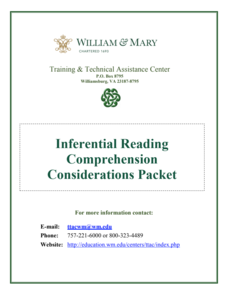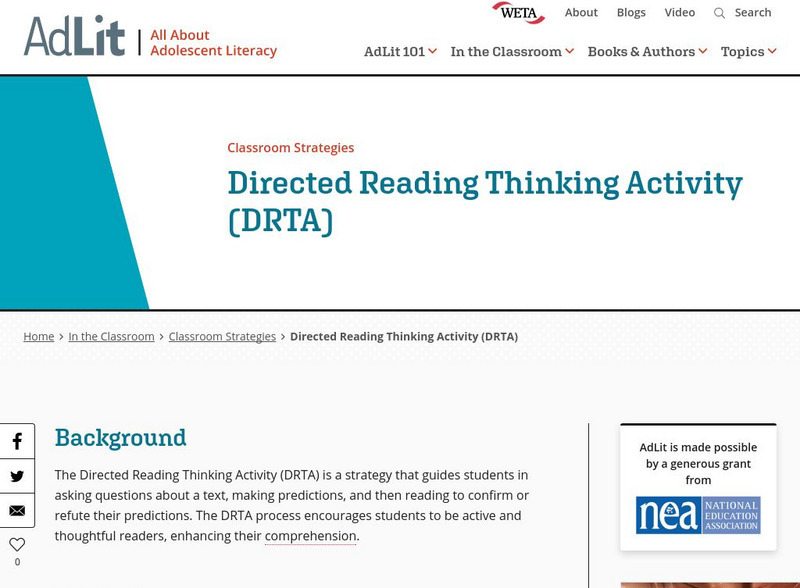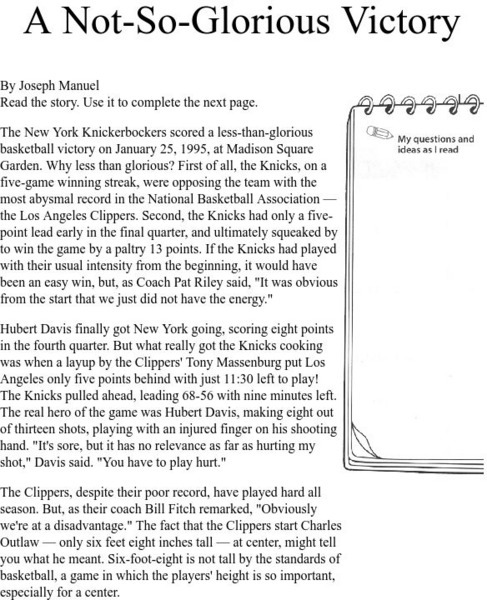William & Mary
Inferential Reading Comprehension Considerations Packet
Don't forget to read between the lines! Educators learn tips and activities to help scholars learn to infer to increase reading comprehension. Activities suggested include think alouds, backwards words, and who's who. the packet includes...
AdLit
Ad lit.org: Classroom Strategies: Directed Reading Thinking Activity (Drta)
The Directed Reading Thinking Activity (DRTA) is a strategy that guides students in asking questions about a text, making predictions, and then reading to confirm or refute their predictions. The DRTA process encourages students to be...
AdLit
Ad lit.org: Classroom Strategies: First Lines
First Lines is a strategy in which students read the beginning sentences from assigned readings and make predictions about the content of what they're about to read. This pre-reading technique helps students focus their attention on what...
AdLit
Ad lit.org: Classroom Strategies: Semantic Feature Analysis
The Semantic Feature Analysis strategy engages students in reading assignments by asking them to relate selected vocabulary to key features of the text. This technique uses a matrix to help students discover how one set of things is...
Scholastic
Scholastic: A Not So Glorious Victory
After reading "A Not-So-Glorious," Victory, which is included on this page, have your students practice identifying cause and effect using the printable worksheet.
Wisconsin Response to Intervention Center
Wisconsin Rt I Center: Pals [Pdf]
Classroom teachers will learn about Peer Assisted Learning/Literacy Strategies (PALS) an engaging instructional strategy for students. Teachers will learn how to implement PALS, understand how to measure progress with PALS, and find...
Teachers.net
Teachers.net: Cause and Effect
Simple and effective method for introducing primary students to the concept of cause and effect in literature.





![Wisconsin Rt I Center: Pals [Pdf] Professional Doc Wisconsin Rt I Center: Pals [Pdf] Professional Doc](https://d15y2dacu3jp90.cloudfront.net/images/attachment_defaults/resource/large/FPO-knovation.png)
